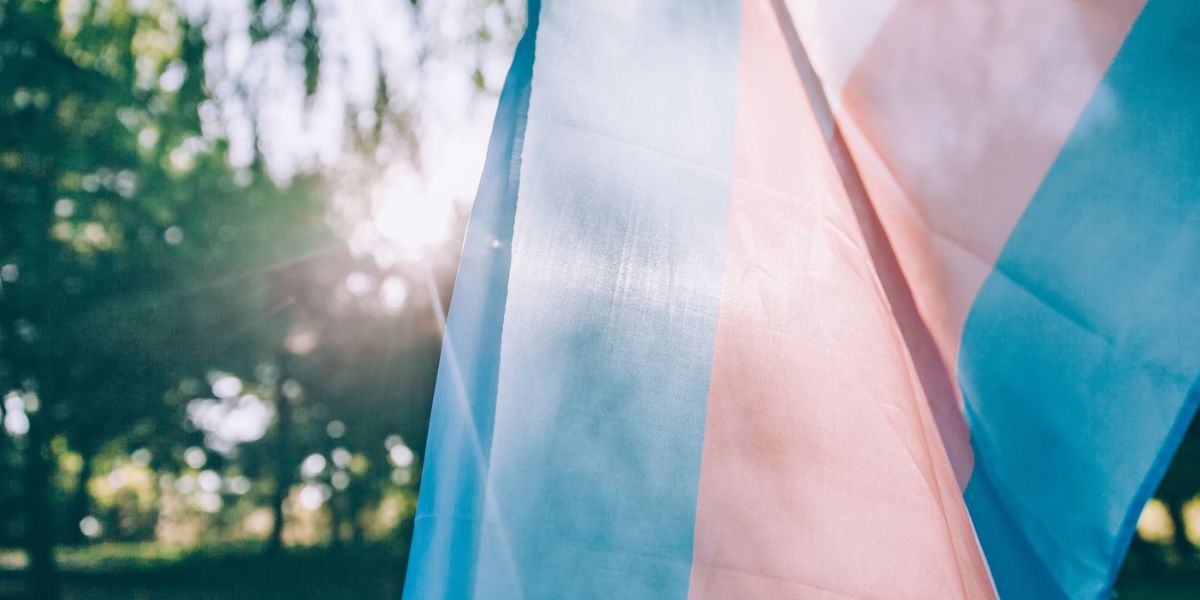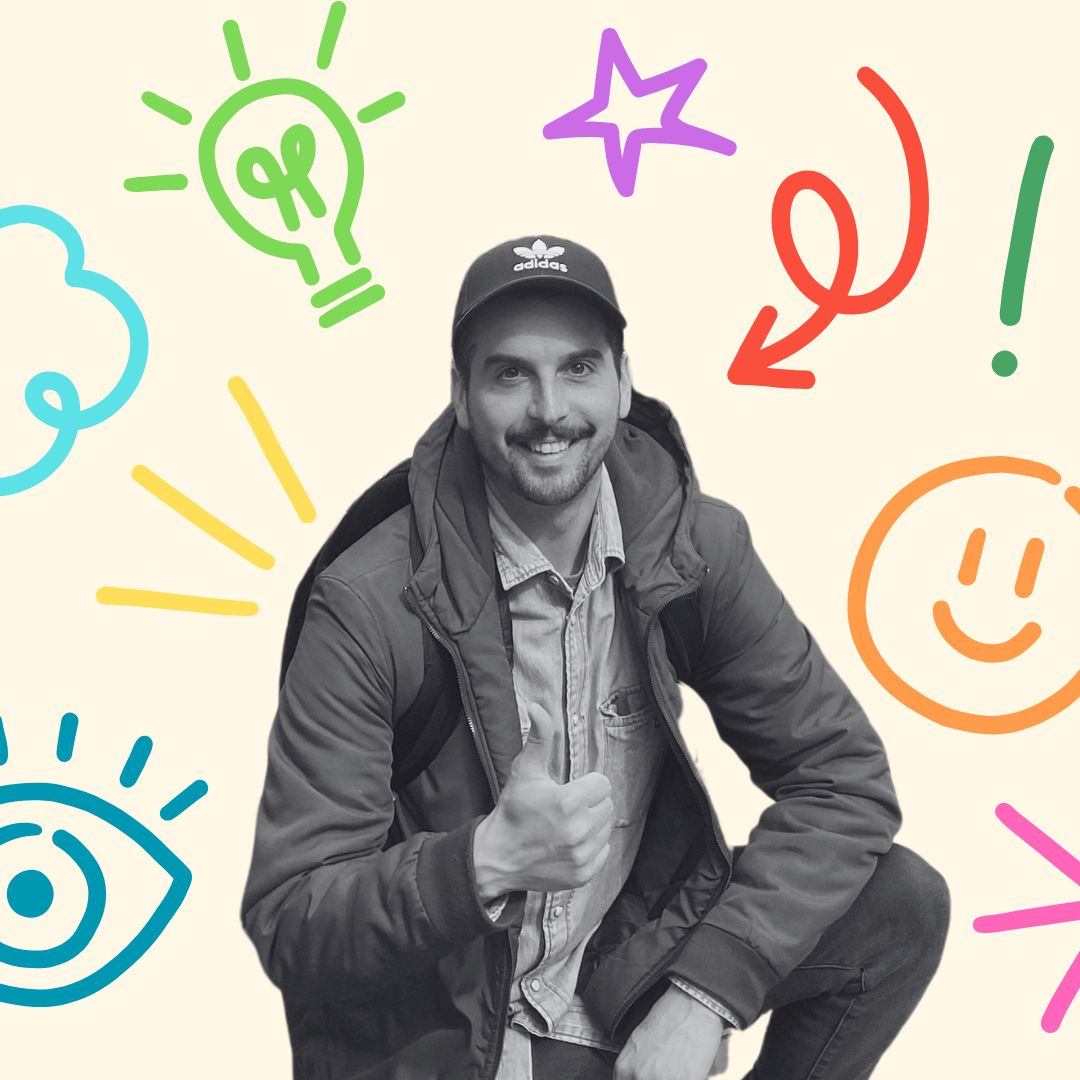Winnipeg-born Andrew Mingo discovered his passion for design while attending high school in Dauphin, Manitoba. After realizing that the best design solutions had the potential to make a real difference in the world, he committed to enrolling in Red River Polytechnic’s competitive design program. Andrew soon found himself the first of his family to be accepted into post-secondary school (and on his first attempt at applying, no less).
How did you get started in design?
I’ve always been artsy, and I’ve always liked to paint and draw and do that sort of stuff but there’s something so satisfying about creating a solution—and creating the right solution. I really find that powerful about design.
At Red River, they teach design and the philosophy that’s very much about the communicative purpose of design. And that’s something that I really connected to.
Another thing that I really liked about design is its ability to solve problems and make things better, not only through pretty pictures and fun visuals, but also through effective use of those visuals. I find that so satisfying.
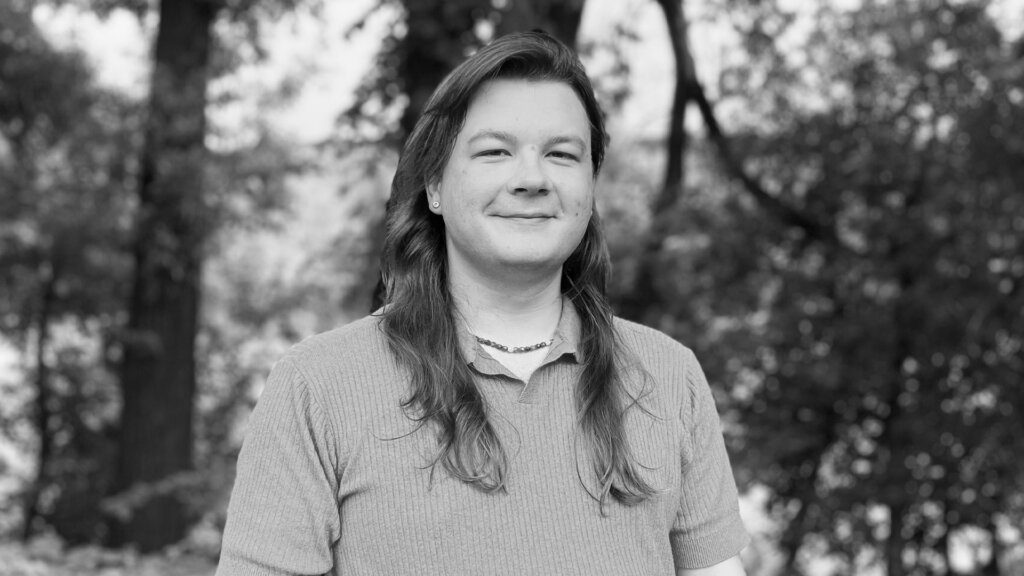
What are three words you would use to describe yourself?
I would say chaotic, passionate and sleepy.
Describe your creative process, what does your environment look like? What kind of music do you have playing?
The music part is quite a range. I would say, when I need to focus, what works best for me is loud and obnoxious music. I’m pretty young, so I listen to hyperpop. I find that those electronic bleeps and bloops and really fast beats keep me in a zone of functionality that blocks out everything else.
In terms of a creative environment, I kind of absorb design constantly. I’m always on Instagram, I’m always on social media or reading books. I work with about 30 other designers at my current job, so being able to see what they’re working on constantly is vital to my creative process. I like to see how other people think about solutions. I would say that my ideal environment is really collaborative and very social—but also with the ability to get to work. I’m the most productive, and have the most positive outcomes, through collaborative work environments.
What do you do to get out of a creative slump? Where do you look for inspiration these days?
I think it’s always good to take a break. I think there’s a saying—or maybe it’s an actual stat—that your brain can’t really focus on a task for more than two hours. After that you’re less and less able to focus on something and come up with ideas that aren’t just things you’ve done before. So for me, I really like to take a break and get up and go for a walk or leave the room or something, make a little bit of a separation. That design never really leaves my brain, because I’ll still be thinking about it when I’m walking around, but I find that it helps to step away from the computer specifically. I find that a lot of my best solutions come from me on the bus on the way to work going, “Well, I wonder if I could do this,” or “I wonder if that would be bright enough or punchy enough?”
I recommend, stepping away or absorbing more creative work, like going on Behance or Pinterest if that’s your thing, and just absorbing new visuals. Not necessarily to come up with something or to find something, but more to give your eyes a chance to look at something else and say, “Oh, that’s cool,” or “That’s cheerful. I like those colors.” I think those are the things that you should do when you’re stumped.
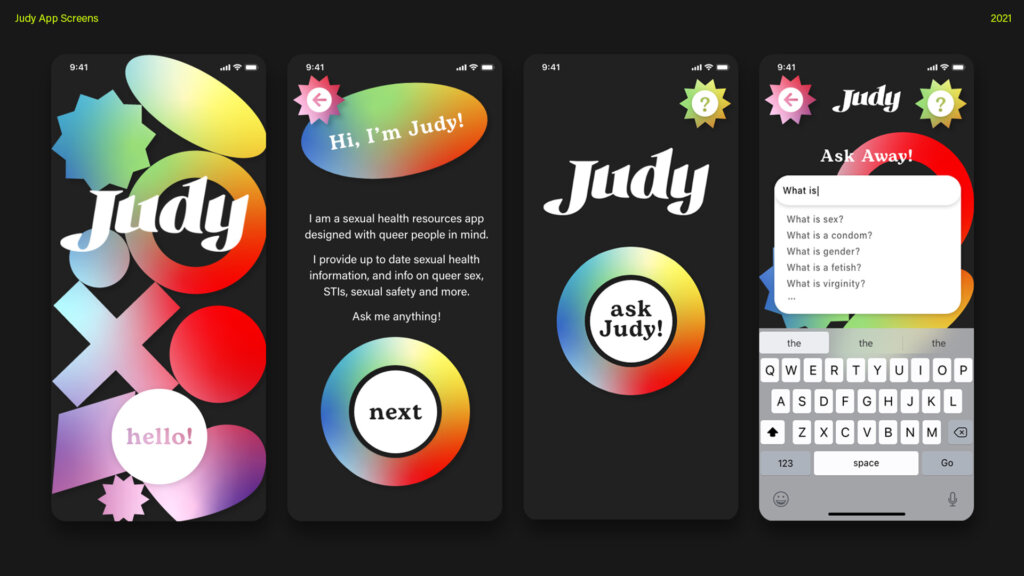
Can you tell us about your journey as a queer artist and whether your identity influences your creative process?
I think I’ve always recognized myself as a queer person, but that identity has changed a little bit throughout my life. I started out just as just identifying as gay, and then learning that you can be more than that, and that gender is less rigid and rule defined than we think it is. I think that’s actually an excellent lesson for design as well—that these things are only tools to make life easier. Gender is a way for us to communicate with people easier and to understand people easier.
There are ideas and goals for things, but truly the best solutions come out of trying to break those rules or trying to work with them or around them.
I would say that my identity definitely relates to my work in terms of color choices and the sort of visuals that I’ve gravitated towards. It’s definitely very saturated, very punchy, and I would say youthful and bright. I think that connects with my overall view of life, which does come from identity—learning that there aren’t rules and that life can be whatever you want it to be.
There’s a joke with my friends that goes “This may not exist in your fantasy, but in my fantasy, this very much is part of life.” Just the other day, I was talking to my friends about the idea of gender abolition and a world where people’s value is as a person first and anything below that, like gender, is less valuable. And he brought a perspective of, “Well, you don’t actually believe that could happen, right? You don’t believe that?” It goes back to my fantasy situation. In my world, that very much can and will happen. And if I live my life from that perspective, I’m just more positive and joyful. I think that definitely comes from being a queer person and, by default, being against the norm, or being classified that way by others.
In what ways do you believe design can be used to promote inclusivity and representation for the 2SLGBTQ+ community?
I think it’s very apparent that there’s a good balance of gender identities—I feel like design is one field where that’s really expressed. But when it comes to other minority groups, I find that it gets a little bit tough. Indigenous groups, for example. I had one Indigenous classmate in school, and there were about 50 of us. So that’s a pretty rough ratio, considering they are the original people of Canada.
I would say that identity is really important to design, especially with having effective perspectives.
In school, you read this book, The Politics of Design. It expresses that design, although we like to speak of it as common sense, a lot of it is still learned behaviours. We’ve learned that visuals presented in this way means this, we’ve learned that the biggest thing on the page is the most important and things follow down from there. But there’s situations where having different perspectives allow you to make better designs. It allows you to find solutions that more accurately serve the people that you are designing for. And to not run into situations where, for example, a five pointed star in Western countries is a star, but in some Eastern countries, it is still a symbol that’s tied to Nazis.
Part of design is that you’re designing exclusively for other people—the end user. And, when the end user is broad and diverse, designing from a diverse perspective really is the best way to get an effective solution.
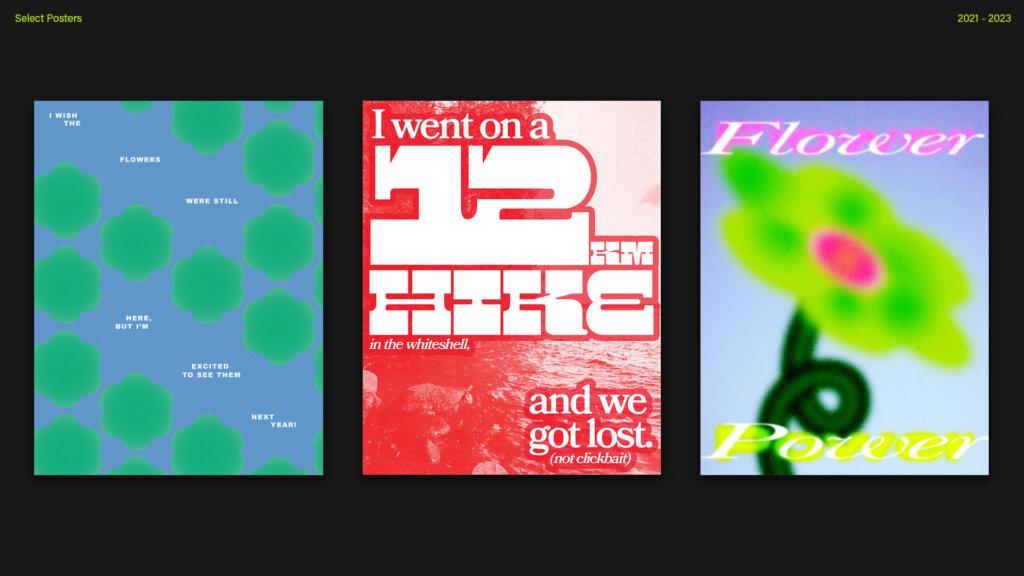
What advice would you give to other queer designers who are just starting their careers and looking to make a positive impact through their work?
A sentiment that I’ve nurtured in the last couple of years, and one that I like to share with young designers, is you will make it. If you want this, it will happen. The only chance in which this world doesn’t become a reality—in which you aren’t a designer—is one in which you stop. So, I would say that the sentiment is keep going, you will make it. You have everything within yourself to make it.
For readers who may be struggling with their sexuality or gender identity, is there any advice you might give?
I would honestly connect back to the sort of “my reality” sentiment and that your identity is for you. It is the way in which you navigate the world that feels the most correct.
Nobody else’s thoughts or opinions or beliefs on your existence matters. At the end of the day, you’re the only person in your head—you’re the only voice. And you’re the only one that dictates your reality.
I would say those who are struggling with their identities or struggling to come to terms with their identities—are struggling to see their identities as valid. I would just remind them that gender is a construct. We made it up in the first place,and it’s something that we can make up again. This world is sort of, you know, it’s a cheesy sentiment, but it’s your oyster. We’re all here for reasons unknown, and our only purpose is to enjoy the gift of life that we have. I think part of that is doing your best to cast aside any other person’s negative beliefs or unhelpful thoughts and just truly honoring yourself and the person that has been, and always will be, there for you: yourself.
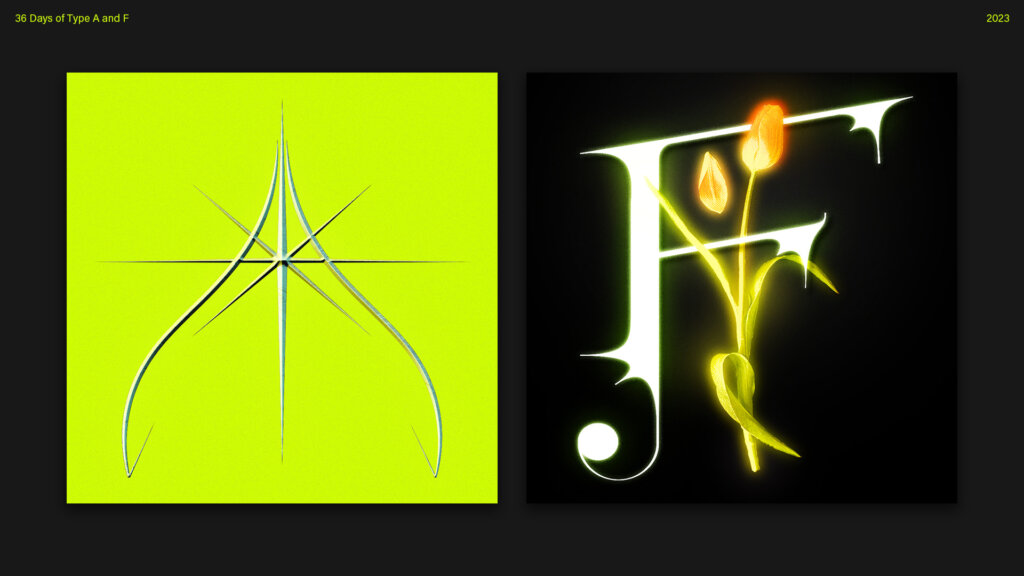
If you’re at a social or a bar or a party, what is one song that could for sure get you on the dance floor no matter what?
I’ve really been enjoying a song called My Barn My Rules by MCR-T and horsegiirL, from the Farm Fantasies album. It’s a dancey pop song and I think it’s silly and I’ve been listening to it nonstop all week.

